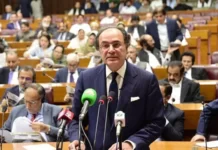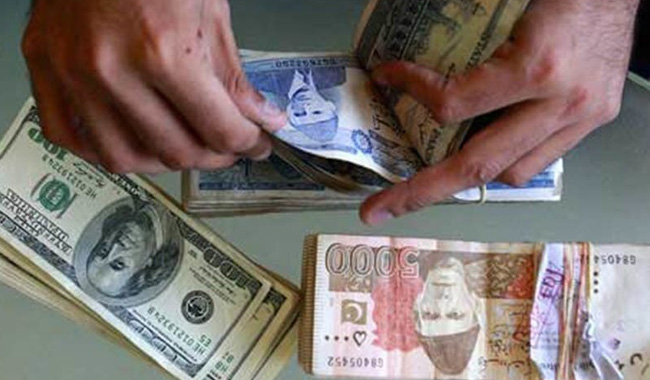Rapid debt growth drastically shrinks fiscal space
ISLAMABAD: The federal government’s debt rose to Rs24.2 trillion at the end of the last fiscal year, a net addition of Rs9.8 trillion in the last five years, at an annual growth rate of 13.5%, reported the State Bank of Pakistan (SBP) on Wednesday.
Five years ago, total debt of the central government stood at Rs16.4 trillion, which has grown rapidly during the PML-N government’s tenure. The debt is exclusive of all obligations that are not the direct responsibility of the finance ministry, reports The Express Tribune.
The pace of debt accumulation during the past five years has squeezed fiscal space. The cost of debt servicing alone in the first month of this fiscal year was over one-third of the total spending in July, owing to the increase in interest rates by the central bank.
According to the director general of the Debt Office, a 1% hike in interest rate adds up to Rs100 billion in the cost of debt servicing at the current stock of debt. Since January, the central bank has increased the interest rates by 1.75% to 7.5%. A one-rupee devaluation against the US dollar also adds up Rs70 billion in the cost of external debt servicing.
Higher expenditure on debt servicing and defence has left little fiscal space with these two heads accounting for about 55% of the total federal government spending.
On average, there was net addition of Rs2 trillion per annum in the central government debt, an increase of 13.5% each year. The pace of accumulation was also significantly higher than the nominal Gross Domestic Product (GDP) growth rate.
Uncontrolled expenditures, mainly non-development, increase in tax revenues at a pace lower than nominal GDP and higher spending on debt servicing and defence are among the main reasons behind the mushroom growth in central government’s debt.
In the past five years, the federal government’s total domestic debt has increased to Rs16.4 trillion, an addition of Rs6.9 trillion or 72.7%, as compared to Rs9.5 trillion five years ago.
During this period, debt structure underwent a drastic change, which exposed the finance ministry to refinancing risks. The share of short-term public debt stood at 54.2% by June 2018. In June 2013, the short-term domestic debt stood at Rs5.2 trillion that has now spiked to Rs8.9 trillion. There was an increase of Rs3.8 trillion in the short-term domestic debt in the past five years. The rise was the result of growing dependence on borrowing through the sale of market treasury bills (MTBs).
Another reason for the high share of short-term debt was that the federal government started relying on the central bank to finance its deficit during the last two years.
In five years, long-term debt also increased by 74.4% to Rs7.5 trillion. In 2013, the long-term domestic debt remained at Rs4.3 trillion that saw an increase of Rs3.2 trillion in five years. The federal ministry of finance is facing difficulties in arranging the long-term debt, as commercial banks are reluctant to invest in long-term securities in an anticipation of further hike in interest rates. The ministry raised only Rs15 billion against the five-year Pakistan investment bonds at an interest rate of 9.25%.
The permanent debt, which was Rs2.2 trillion till June 2013, has increased by 113% to Rs4.7 trillion. Five years ago, the debt acquired through the sale of prize bonds was Rs390 billion that jumped 118% to Rs851 billion.
The central government’s external debt also recorded an increase of over 62 % in five years. In June 2013, the external debt stood at Rs4.85 trillion that rose to Rs7.8 trillion by the end of June 2018.
There was a net increase of Rs3 trillion in the external debt in five years. These figures do not include the roughly Rs700 billion taken from the International Monetary Fund (IMF), which is the responsibility of the central bank.
























